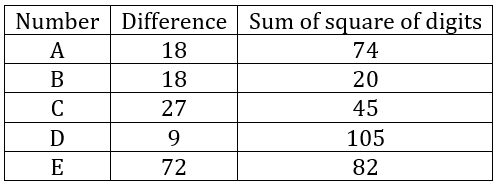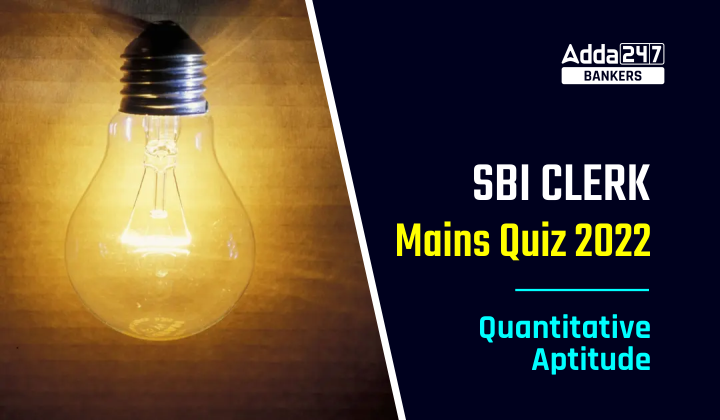Directions (1-4): Study the bar chart given below carefully and answer the following questions.
Bar chart shows percentage increase in buying price and in selling price of one share of RIL as compared to its respective buying price and selling price in the previous month.

Note – Buying price of 1 share of RIL in Januray is Rs.50000 and selling price of 1 share of RIL in Januray is Rs.50000. Buying price/selling price of 1 share of RIL in every month remains uniform throughout the month.
Q1. Shivam purchased two shares of RIL: one in February and other in March. If he sold both shares of RIL in April, then find the total profit earned by Shivam?
(a) Rs 58700
(b) Rs 52500
(c) Rs 42600
(d) Rs 46800
(e) Rs 49400
Q2. In the month of March, Deepak and Mohit purchased total 10 shares of RIL and ratio of shares of RIL bought by Deepak to that by Mohit is 3 : 2. If both Deepak and Mohit sold their shares of RIL in May, then find the difference in profit share of Deepak and Mohit.
(a) Rs 50760
(b) Rs 53280
(c) Rs 51680
(d) Rs 52360
(e) Rs 52580
Q3. Selling price of 1 share of RIL in April is what percent more than buying price of 1 share of RIL in March?

Q4. Find the ratio between selling price of 1 share of RIL in April to buying price of 1 share of RIL in March?
(a) 13 : 11
(b) 130 : 109
(c) 143 : 115
(d) 69 : 64
(e) 151 : 117
Directions (5 – 9): Given table shows information about digits of five two – digit different numbers. Read the information carefully and answer the questions.

NOTE: Difference given in table is (only numerical value) between actual number and the number obtained when its digits are reversed. (if number is ab then difference = (ab – ba) or (ba – ab))
* Consider maximum value of each number unless asked for other value in question
Q5. what is difference between B and D if minimum value of D is considered?
(a) 45
(b) 36
(c) 54
(d) 18
(e) 63
Q6. Average of all numbers is X. what is the difference between maximum & minimum possible value of X?
(a) 24.6
(b) 30.2
(c) 26.8
(d) 22.4
(e) 28.8
Q7. If numbers obtained by reversing the digits of A(minimum value), B and C are added to obtain a new number N. find the difference between N and number obtained by reversing the digits of N.
(a) 396
(b) 594
(c) 198
(d) 99
(e) 297
Q8. what is exact value of P + Q?
I. P is LCM of A & D. both B & C are divisible by Q.
II. Difference between A and D(minimum value) divided by Q leaves same remainder as remainder obtained when half of difference between A (minimum value) & C is divided by Q.
(a) Either of statement is sufficient to answer
(b) Only statement I is sufficient to answer
(c) Both statements together are not required to answer
(d) Only statement II is sufficient to answer
(e) Both statements together are required to answer
Q9. Remainder obtained when E is divided by A (minimum value) is added to remainder so obtained when D is divided by B. Then the resultant number is subtracted from C to get X. what is ratio of X to {E – D(minimum value)}?
(a) 9 : 13
(b) None of these
(c) 11 : 1
(d) 2 : 1
(e) 1 : 4
Directions (10 – 13): Bar graph given below shows difference between red and blue balls in four different bags and total number of balls in these four bags. Read the data carefully and answer the questions.

Note – Each bag contains three color of balls = Red + Blue + Green
Q10. If three balls are taken out form the bag C, then what will be probability such that maximum red balls are left in the bag?

Q11. If one ball is taken out from each bag C & D and probability of both the balls being Red is 13/15, then find difference between Green balls in both the bags? (Given- red balls > blue balls in both bags and ratio of red balls in bag C to that of in bag D is 7 : 8)
(a) 0
(b) 4
(c) 3
(d) 1
(e) 2
Q12. If one ball is taken out from bag B and probability of that ball being blue is 2/9, then find the ratio of green balls to red balls in the bag B?
(a) 1: 2
(b) 3 : 4
(c) 3 : 8
(d) 2 : 3
(e) 4 : 5
Q13. Red balls are more than blue balls in both bags A & C and ratio of blue balls in bag A to that of in bag C is 6:5. If One ball from the bag A and two balls from the bag C are taken out and difference between probability of balls taken out from both the bag being red is 11/45, then what is the total number of green balls in bag A & bag C together?
(a) 9
(b) 5
(c) 6
(d) 7
(e) 8
Solutions











 General Awareness Quiz for Bank Mains Ex...
General Awareness Quiz for Bank Mains Ex...
 English Language Quiz For Bank Foundatio...
English Language Quiz For Bank Foundatio...
 Reasoning Quiz For Bank Foundation 2024 ...
Reasoning Quiz For Bank Foundation 2024 ...




